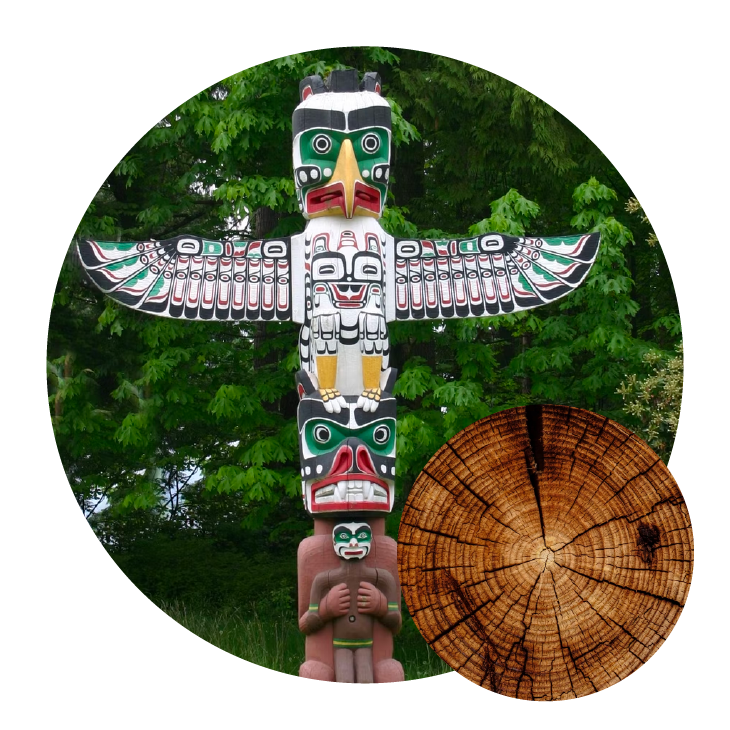
The hallmark characteristic of Western Red Cedar is its natural durability that has preserved examples of Native Culture for more than 100 years.

Western Red Cedar is a wood with roots of use that date back centuries to the Native Americans who first named it the “Tree of Life.” Along B.C.’s Pacific Coast, Aboriginal people have used cedar bark to make rope, clothing, and baskets for thousands of years. The logs are used for a variety of purposes, including canoes, totem poles, masks and longhouses. Native Americans would also remove large slabs of outer bark from living trees for roofing materials or cut a rectangular hole into a tree to test its soundness before cutting it for a canoe or totem pole.